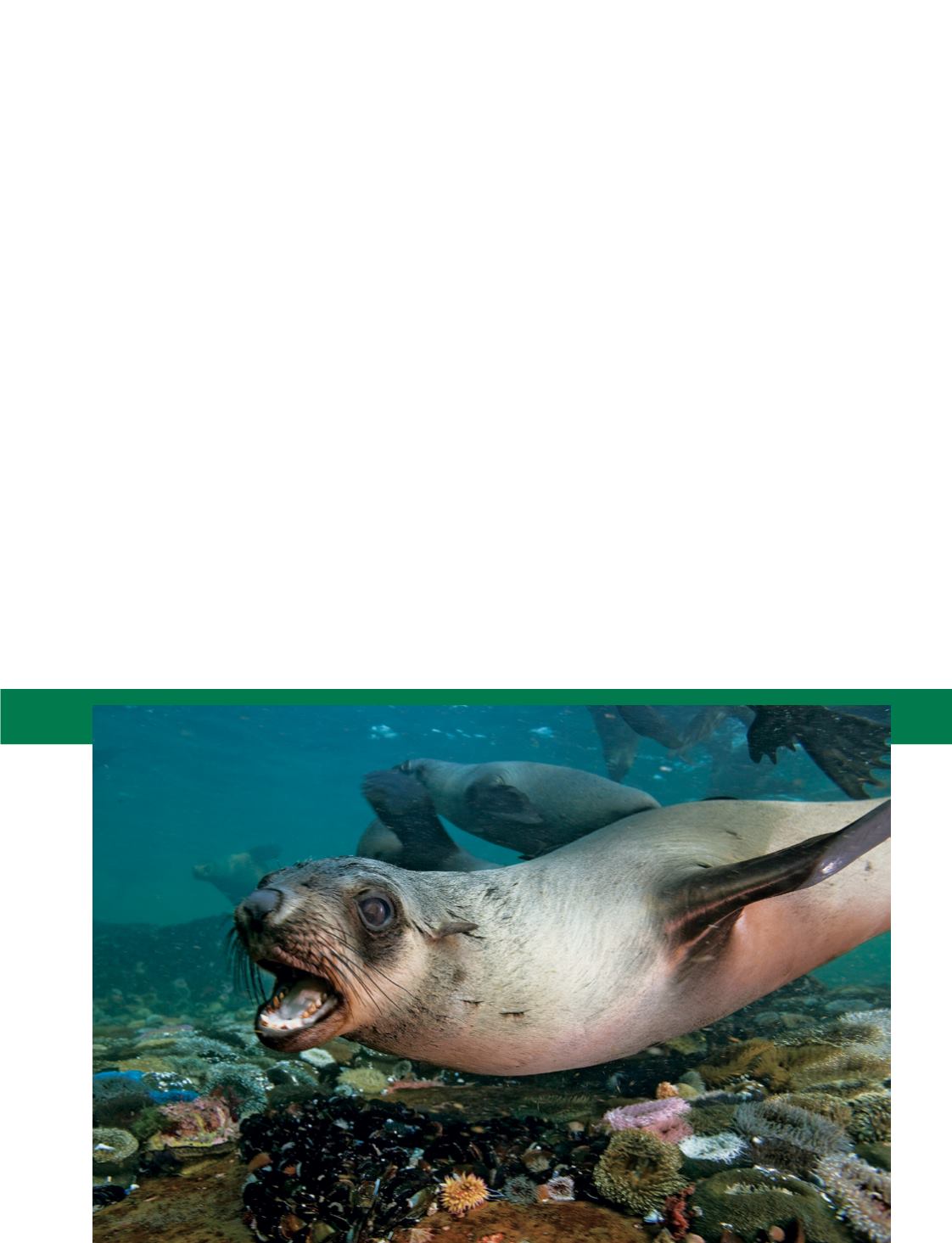
sevengill sharks, which patrol the magnificent kelp forests
that flank both the eastern and western sides of the bay.
Pyramid Rock, only a 10-minute boat ride from Simon’s
Town, offers what is probably the world’s best sevengill
shark dive. The visibility is generally good (in the 15- to
50-foot range), and the kelp forests these massive prehistoric
predators patrol are spectacular. The sharks are curious but
docile — a good mix — and they often closely inspect divers.
If you book in advance, a two-tank dive can permit a visit
to a colony of Cape fur seals roughly a mile away from the
shark dive. These ever-playful seals never hesitate to show
off their agility and cavort and play with gay abandon around
any divers willing to be their playmates. Depth in both these
areas is generally around 30 feet, and the conditions are
generally appropriate even for novice divers.
As the Southern Hemisphere’s summer unfolds, so does the
opportunity to head offshore into the realm of the open-ocean
predators. Simon’s Town is the point of departure for pelagic
shark trips, which showcase spectacular mako and blue sharks.
Rounding the dramatic cliffs of Cape Point — one of the
world’s great nautical landmarks — the next stop is the open
sea, and this trip is about as adventurous as any you can do in
a single day.
The warm Agulhas Current washes down the cape’s east
coast and rounds Cape Point about 15 to 25 miles offshore.
The water here is warm, clear and often quite blue. Dives
here are primarily undertaken by drifting in a cage that floats
some 10 yards behind the boat, allowing sharks to easily circle
the divers within. The use of the cage is not only to increase
safety, but also to compensate for the current. Being in the
cage allows divers the chance to concentrate on the action
rather than keeping up with the boat. On flat, calm days divers
may be allowed to drift and free dive, depending on their skill
level. Water temperatures range from the high 60s to mid-70s,
and visibility is typically 30 to 60 feet. Yellowfin and albacore
tuna, sunfish, turtles and even marlin are seen on these
remarkable trips. Be warned, though, that these excursions are
highly weather dependent, so a few days should be set aside to
accommodate this excursion. The best months are typically
December through April.
If after the shark, whale, dolphin and seal action you feel
a more relaxing expedition might be in order, the Boulders
Beach penguin colony has more than 2,000 pairs of African
penguins and offers a chance to get close to these comical
birds in a magical setting of large boulders by a pristine sea.
There are few, if any, places that can match False Bay in
terms of diversity of predators, ease with which they can be
seen and year-round options for activities that range from
very mild to pretty wild. Be warned that during September,
October and November the wind can really blow; divers
should consider contingency plans for land-based activities
such as wine tasting or visits to Cape Point Nature Reserve,
Table Mountain, Kirstenbosch National Botanical Garden or
Robben Island (where Nelson Mandela was imprisoned).
Gansbaai
If great white sharks are your priority, you should visit
Gansbaai
, the “great white shark diving capital of the world.”
Gansbaai is 2.5 hours from Cape Town by road; you travel
through some beautiful areas, including Hermanus, which is
|
67
Playful Cape fur seal, False Bay
CHRIS FALLOWS


